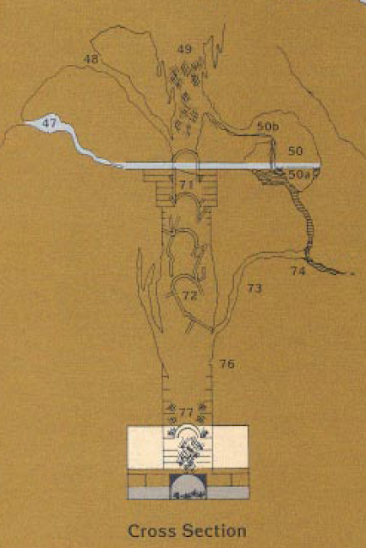 |
Zereth casting a spell from a clerical scroll in "The Sorcerer's Jewel".
Art by Jim Roslof. Scan from Grognardia |
One aspect of Holmes Basic that often jumps out at new readers (since it is not found in other editions of D&D) is the scrolls on the Treasure Tables that have Potion, Ring or Wand spells. Another feature that is much less frequently noted is that only magic-users can use scrolls with clerical spells!
True, clerical scrolls are not explicitly mentioned anywhere in the first printing of the Holmes Basic rulebook (later printings do add a note that second level cleric spells are included for "non-player characters and scrolls"). But the Scrolls table indicates that scrolls can contain "any of the spells previously described, under Spells or described here as potions, rings, wands, etc" (pg 36). Here "spells" must include both magic-user and cleric spells, given that scrolls can also contain non-standard spells from magic-items. The section in text describing Scrolls then goes on to state that "The spells written on scrolls can be read only by magic-users, except for the protection spells" (pg 37). Thus, together Holmes suggests that scrolls with clerical spells exist but can only be used by magic-users.
It's easy to see where this interpretation came from in the OD&D rules. Monsters & Treasure, page 24, gives a 25% chance of a scroll having clerical spells, with no further indication on who can read these scrolls, but page 32 says, "All Scrolls are spells for Magic-Users, and regardless of the level of the spell they can be used by any Magic-User capable of reading them". Furthermore, the description of Read Magic in Vol I indicates that it is the "means by which incantations on an item or scroll are read. Without such a spell or similar device magic is unintelligible to even a Magic-User" (Holmes also retains this sentence in the description of this spell in the Basic rulebook). Magic-users are also the only ones indicated as being able to make magic items in both OD&D and Holmes. I imagine this is just an oversight in the OD&D rules, with the statement about cleric scrolls in Vol 2 being added without proper clarification in the other sections of the rules. However, Holmes presumably found these statements, and the lack of a similar Read Magic spell for clerics, to suggest that clerics could not read scrolls with magic spells, and clarified the text in the Basic book accordingly.
There's also evidence that he allowed magic-users to cast cleric scrolls in own personal campaign. In his short story the "Sorceror's Jewel" (Dragon #46), Zereth the Elf casts a number of spells from scrolls provided by the "Patriarch of the Church of Saint Mellon", including one that is a "healing spell".
There are some implications for a Holmesian campaign. How would these scrolls be made? Perhaps by a magic-user (for magic item creation) and cleric (for the spell) working together.
Furthermore, having magic-users able to cast cleric spells from scrolls suggests that there is not much of a difference between the two types of magic. Magic-users should be able to research spells that duplicate any of the cleric spells. Perhaps clerics are just a specialized type of magic-user, one that uses rituals & mnemonics instead of spell books to refresh their spell memory each morning. Spells are only "divinely" given in that the deity provides faith to the character.






















